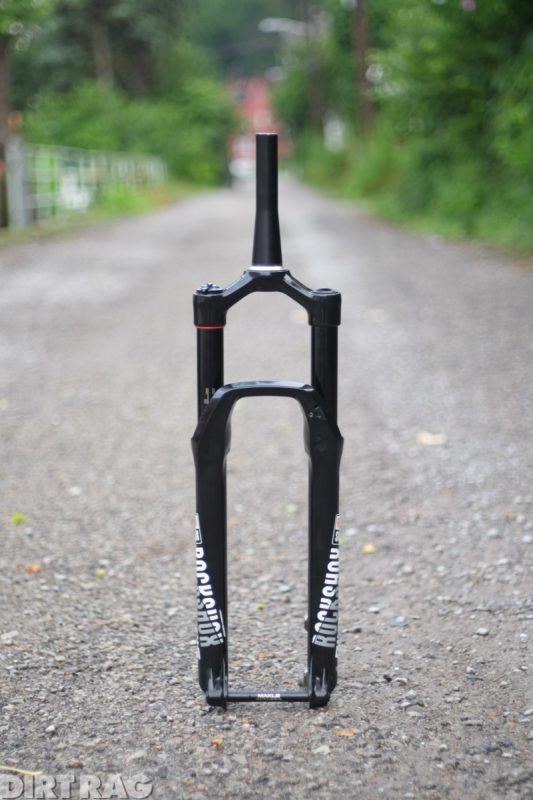Review: RockShox Pike RTC3
Originally posted on October 12, 2017 at 1:20 amBack in the mid-2000s, the Pike was a nondescript 32 mm chassis fork. It developed a bit of a cult following but didn’t really separate itself from its field of competitors. It wasn’t until 2013 that RockShox put the rest of the suspension world on notice with the 35 mm chassis Pike. Not only was the new fork stiffer, the Charger damper, Solo Air spring and Bottomless Token system brought new levels of performance without the need for expensive custom tuning or aftermarket upgrades.
That first 35 mm fork found its way onto all kinds of bikes, from heavy-duty hardtails to EWS winning enduro race bikes. Its versatility was the stuff of legend, but as all-mountain bikes got bigger, faster and stiffer, even the mighty Pike could be left feeling undergunned. Soon, the updated Lyrik stepped in to take over the burly single crown duties.
With the Lyrik offering some relief from the stouter end of the market, the Pike was free to refocus on the the hot, hot heat of the trail bike market. So, what did RockShox change? Everything. To start, the Charger 2 damper uses an hourglass shaped bladder to allow for more expansion within the stanchion. The bleed port takes the same fitting as the Reverb dropper, and the damper (and air spring) both remove with a cassette tool rather than a socket. The damper knobs all move more easily and have more distinct detents, and for the more Euro among us, the new Pike can be had with a remote. The new damper has a less-firm Firm setting, and a more active Pedal setting.

The air spring is updated with DebonAir, RockShox’s name for a larger negative spring. This produces a more supple stroke in the first third of the stroke, and a more supportive midstroke. This air spring tinkering seems to have reduced the need for Bottomless tokens. I pulled one of the two in the fork out after the first ride to help free up some end stroke, something made much easier with the cassette tool interface.
This Pike arrived with a bolt-on Maxle Stealth. Simple, almost impossible to install incorrectly, and lighter than a quick release axle, this is what I think should be stock on most forks. After all, who isn’t carrying a 6 mm on rides? With the lighter axle, cut steerer, star nut and crown race, this new Pike is 1,840 grams, only 20 grams heavier than a similar Fox 34, close enough to be a toss-up, which is good news for RockShox OEM sales. There are some hidden weight savings in the form of stock 180 mm rotor compatibility, so no adapter needed.

Travel ranges have been reduced a bit. The 27.5 fork goes between 100 and 160 mm of travel in 10 mm increments; the 29er is 100-140 mm. Tire clearance has been bumped up to 2.8 inches in each size, which seems to be tracking the trend of 2.4-2.8 widths becoming the sweet spot for trail tires. Hub spacing is 15×110 Boost.
There is always some worry that completely revamping a product might take away some of the magic that made it so popular in the first place. Think New Coke and the new Macbook Pro. The best thing about the new Pike is that it feels much like the old Pike, just better. The damping changes make all three settings more usable on the trail, but a firmer lock-out might be missed on extended paved climbs.

It is still stiff and still has amazing damping. The addition of the cassette tool interfaces makes it easy to tune the air volume and do basic cartridge service. If you already own a Pike, I wouldn’t recommend running out and updating to the new fork, although the Charger 2 and DebonAir spring will drop right into the previous model. RockShox gets extra points for backward compatibility.
This is a refinement of an already excellent product and one I find almost impossible to negatively criticize.
Price: $875
